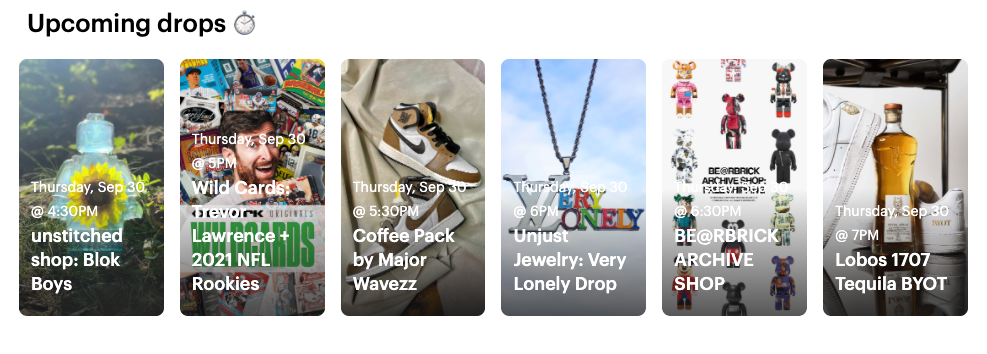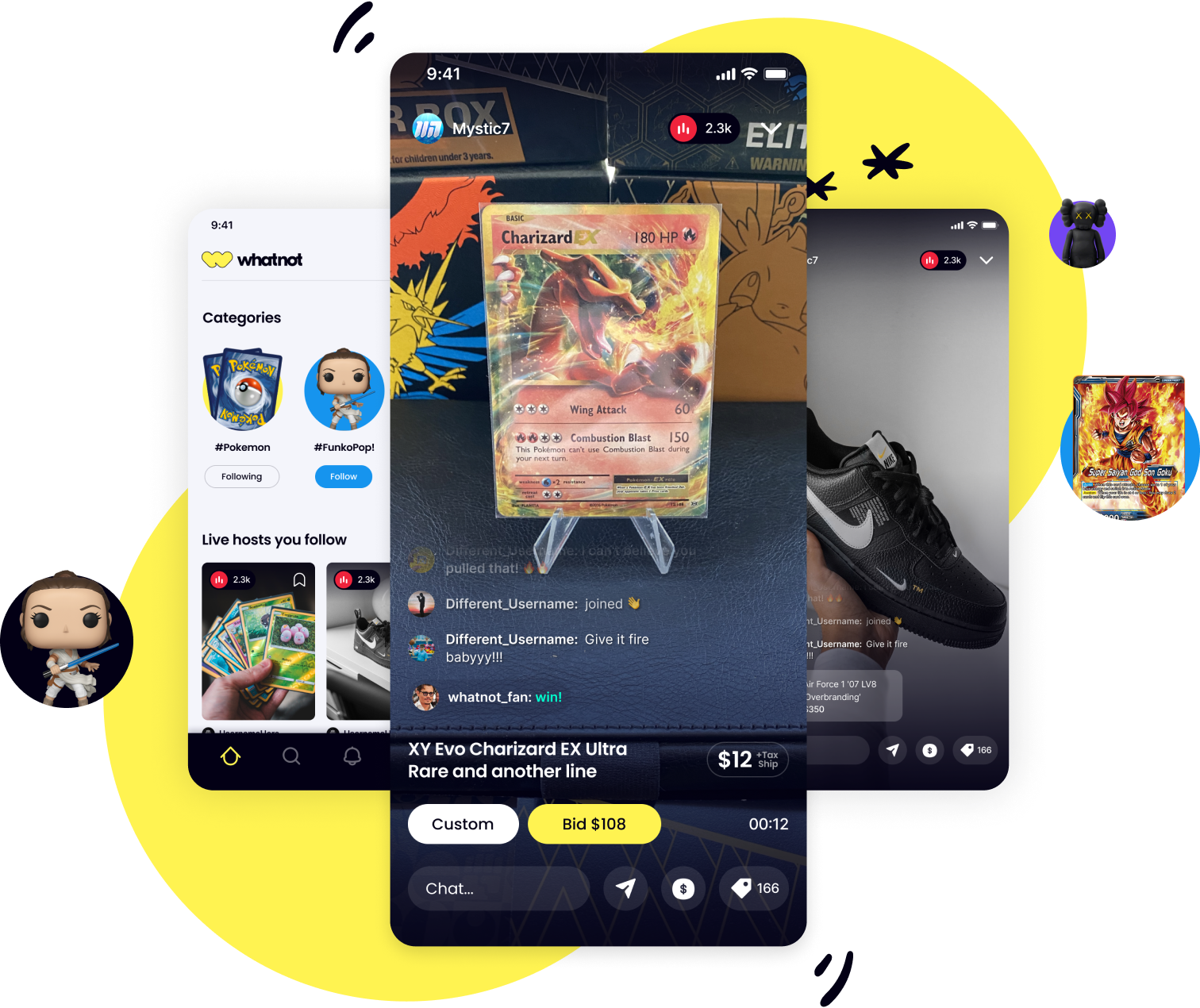Shoppable Video: 6 Platforms Changing the E-Commerce Game
October 1, 2021
Shopping first went virtual in the 1990s. Rather than having to be physically present to purchase a product, we all became accustomed to browsing and buying entirely online.
Since then, chatbots, personalized recommendations, and overnight delivery have become prevalent tools for improving virtual customer engagement. But certain aspects of the in-store experience have remained a challenge for retailers to replicate.
For one thing, who really wants to communicate with a bot? Driving to the store and speaking with a human is often time better spent than messaging with a machine or searching through hours of online reviews.
There’s also the tactile aspect of examining a product in person. Pictures don’t always do justice — and the forest green shirt that looked sophisticated on a website might arrive in a putrid shade or flimsy material.
For these reasons and more, many e-commerce platforms are integrating shoppable video into their offering. And beyond just supplementing photographs with recorded content, the most innovative of the bunch are leveraging live streaming to bring the action to their shoppers.
Table of Contents
- Innovative Platforms Driving the Live Commerce Trend
- The Tech Giants
- The VC-Backed Startup Apps
- Retail Brands
- Critical Requirements for Live Shoppable Video
- Conclusion
Innovative Platforms Driving the Live Commerce Trend
Interactive shopping fueled by live video has already become a mainstay across Asian markets, particularly in China. And thanks to COVID-19, the adoption of live commerce is now spreading across the globe.

In China, live streaming is estimated to have driven ~$125 billion in sales in 2020.1
Earlier this year, I named shoppable video as one of the biggest streaming trends for 2021. Since then, numerous retail organizations have leveraged Wowza’s live streaming solutions to build out their virtual shopping environments, and I’ve come across more innovation in the space than I could have predicted.
Instagram and Facebook now offer Live Shopping, Google is experiment with Shoploop, and Amazon has built out a multi-channel experience on Amazon Live. Walmart even teamed up with TikTok to host a one-hour live stream shopping event during the 2020 holiday season, which will serve as the model for future events.
That said, successful deployment of shoppable video requires more than just streaming. Simple in-app purchasing (in a couple of clicks or less) is essential for platforms looking to blur the gap between ‘scrolling’ and ‘shopping.’ Leveraging data automation for personalization is also a must, as is experimenting with technologies like extended reality (XR) and machine learning (ML) to transform the end-user experience.
Below is my list of the six shoppable video platforms driving this trend and how they’re leveraging live streaming to deliver unmatched experiences in 2021.
The Tech Giants
1. Alibaba’s Taobao Live
Taobao is to live stream shopping what Twitch is to live stream gaming. The Alibaba-owned platform is the eighth most visited site in the world. As the trailblazer in the industry, its live streaming service has been around since 2016. What’s more, Taobao Live touches every industry by facilitating direct-to-consumer live streaming for farmers, business owners, self-employed entrepreneurs, and more.
Much of the success of Taobao Live is linked to the influencer craze. Star saleswoman Viya Huang sold over $45 million worth of goods on Single’s Day in 2019 (similar to Black Friday in the U.S.). Even more impressive, on a record-high night early last year, Viya attracted more viewers to her online shopping channel than the Game of Thrones finale.
Naturally, live streaming lends well to influencer marketing by bringing celebrities closer to their fans. But that’s not all. Quite a bit more goes into Taobao’s secret sauce.
Competitive Advantages:
- Interactive games within the platform create excitement and incentivize spending.
- Influencers attract millions to Taobao across their fanbase.
- Viewers can seamlessly purchase products during a live stream without disrupting the broadcast.
- Taobao continues to push the envelope with artificial intelligence (AI), augmented reality (AR), and 3D animations.
2. Amazon Live
A visit to Amazon Live looks a lot more like QVC or the Home Shopping Network than some virtual mall of the future. But Amazon Live beats out other Western attempts at live commerce in one key area: early adoption. For that reason, Amazon Live already attracts a loyal and established user base, benefits from relationships in place with plenty of brands, and continues to evolve its strategy for the better.
While initially only for businesses, Amazon has democratized live stream hosting with its Live Creator app. Influencers and companies can go live with just a few clicks, earning a cut of each sale generated by the stream. Like Taobao, Amazon Live also takes advantage of seasonal shopping events — with more than 700 businesses streaming to their platform on Prime Day last year.

Competitive Advantages:
- An early adopter in Western markets.
- Most shopper’s payment and personal information are already loaded into their account, reducing friction in the buying process.
- Programming ranges from educational content to features on current deals, with exercise and cooking classes thrown in the mix.
The VC-Backed Startup Apps
3. NTWRK
NTWRK has made headlines lately for its gains in funding, with a recent $50 million infusion led by Goldman Sachs Asset Management. The shoppable video platform was also named one of Fast Company’s Most Innovative Companies of 2021. So, what’s all the hype about?
The mobile app capitalizes on shopertainment, a portmanteau that requires no explanation. Internet celebrities like HQ Trivia’s Scott Rogowsksy host events on NTWRK, with programming scheduled around product drops, virtual festivals, and exclusive drawings.

The merchandise itself also lures users to the platform. Rare art, collectibles, and limited-edition sneakers make up NTWRK’s goods. NFTs can even be sold on the platform, enabling NTWRK to tap into a new business model entirely.
Competitive Advantages:
- NTWRK is bringing shopertainment to mobile users with celebrity hosts and publicized events.
- Limited edition merchandise creates more urgency to purchase.
- Payment integration within the app enables easy purchasing.
- Sleek user interface (UI) with vertical video for a mobile-first experience.
4. Whatnot
Whatnot is notable because it combines a targeted niche — collectibles (think Pokémon cards) — with the live auction format. The shopping platform capitalizes on the nostalgia for paper goods like comic books and sports cards, as well as the need for community brought on by the pandemic. With Whatnot, enthusiasts across the world can nerd-out together while exchanging goods in the process.
Real-time bidding fosters the urgency of an in-person auction, prompting immediate action and enhanced community participation. This also tends to increase the average sales price by inspiring competition between buyers.
The company has raised $225 million in funding to date, putting its valuation at $1.5 billion (and thus giving it unicorn status).

Competitive Advantages:
- The live online auction format translates to increased participation, real-time interactivity, and higher sales prices.
- Focus on collectibles taps into an underserviced market with a sticky community.
- Whatnot vets all streamers to keep fraud to a minimum and provides additional onboarding to trusted sellers.
Retail Brands
5. Ulta Beauty
Ulta Beauty has taken a multi-pronged approach to live commerce, which lends particularly well to the cosmetic industry.
With Beauty School Live, Ulta broadcasts virtual masterclasses on makeup trends and application techniques. The retailer is also one of the first brands to partner with Google Shoploop, a short video app designed for simple purchasing. Additionally, Ulta hosts live streams on Supergreat, a beauty app that connects its Gen Z userbase with influencers sharing skin routines, application techniques, and product reviews.
Beyond that, Ulta offers a host of AR/AI-driven capabilities, personalized video chat from their gift advisors, and robust virtual experiences to rival in-store shopping.

Not only is Ulta’s commitment to integrating technology into the customer journey impressive — it’s proven. After taking a major hit during the cosmetic industry’s pandemic-fueled decline, Ulta is ranked as a top beauty stock based on value, growth, and momentum.
Competitive Advantages:
- Integration of live streaming and other immersive technologies into overall strategy.
- Experimentation with multiple platforms and channels.
- Combination of one-to-one and one-to-many live video applications.
6. Albertsons
Albertsons is in the very early stages of live stream shopping, but I included the grocer on this list because it’s changing consumer expectations nonetheless. Via a partnership with Firework announced last week, Albertsons will be the first U.S. grocer to bring live video into the retail grocery space.
Competitive Advantage:
- First U.S. retailer to incorporate live streaming into their digital transformation strategy.
Critical Requirements for Live Shoppable Video Platforms
So, what will it take for live commerce to stick in the U.S.? Beyond the competitive advantages detailed above, a few capabilities are table stakes for anyone looking to dabble in live stream shopping.
Low-Latency Video
Low-latency video technologies are foundational to live stream shopping. Without speedy video delivery, interactivity just isn’t possible. Besides, the draw of live commerce is often just that: the ability for viewers to become participants in a dynamic experience.
Low-latency streaming enables real-time engagement via questions, comments, emojis, and more — resulting in an immersive, engaging experience characterized by both urgency and personalization.
Ease of Use and Cross-Platform Integration
One of the reasons live commerce took off so quickly in China is the ease of use their platforms deliver. Users on Taobao can purchase natively within the social media application they’re using, with payment integrated across disparate platforms.
Taobao’s implementation of this is far more sophisticated than, say, converting a buyer via Instagram Live to make a purchase on Amazon. As a result, the retail tech giant ensures a quick path to purchase and a frictionless user experience.
Scalability
The goal of any broadcast is to go viral, with one notable live shopping event last year attracting more than 37 million viewers. But broadcasting at scale while maintaining two-way engagement doesn’t come easy. That’s because many streaming technologies prioritize either low latency or scalability, and not a combination of the two.
For that reason, anyone building a live commerce platform will want to seek out streaming technology purpose-built for these types of broadcasts.
Conclusion
Brick-and-mortar retail may never go the way of the dinosaurs, but nor will it return to its former height. Luckily, though, live video streaming is one of the easiest tools for reaching remote shoppers, which is why it’s reshaping the e-commerce industry as we know it.
The opportunities for doing so are limitless. Imagine watching a live Apple product launch that allows you to purchase the newest iPhone in real time, while also discussing the features with an Apple employee. The integration of payment methods like Apple Pay would allow for one-click purchases, and the ability to ask questions before making the purchase would reduce the number of returns.
There’s also the promise of extended reality (XR) technologies to improve immersion. IKEA has already launched an AR app that lets buyers virtually “place” products within their homes. Users can point their camera at an empty space as the app overlays an image of a couch, table, or rug. Likewise, Facebook announced plans to bring AR clothing and makeup try-ons to its social properties, letting remote users try before they buy without leaving the house.
Shoppable video is a win-win for both consumers and retailers. But realizing all the ‘what-ifs’ will take some time. Luckily, Wowza’s streaming technology offers the flexibility to bring any live streaming use case to life, with our Professional Services team at the ready to accelerate the process.
1. CNBC, Nordstrom Debuts Platform for Shoppable Shows as More Retailer Experiment With Live Streaming, March 2021




